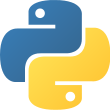Get up and running with Python 3.9 through concise tutorials and practical projects in this fully updated third edition.
Purchase of the print or Kindle book includes a free eBook in PDF format.
Key Features
- Extensively revised with richer examples, Python 3.9 syntax, and new chapters on APIs and packaging and distributing Python code
- Discover how to think like a Python programmer
- Learn the fundamentals of Python through real-world projects in API development, GUI programming, and data science
Book Description
Learn Python Programming, Third Edition is both a theoretical and practical introduction to Python, an extremely flexible and powerful programming language that can be applied to many disciplines. This book will make learning Python easy and give you a thorough understanding of the language. You'll learn how to write programs, build modern APIs, and work with data by using renowned Python data science libraries.
This revised edition covers the latest updates on API management, packaging applications, and testing. There is also broader coverage of context managers and an updated data science chapter.
The book empowers you to take ownership of writing your software and become independent in fetching the resources you need. You will have a clear idea of where to go and how to build on what you have learned from the book.
Through examples, the book explores a wide range of applications and concludes by building real-world Python projects based on the concepts you have learned.
What you will learn
- Get Python up and running on Windows, Mac, and Linux
- Write elegant, reusable, and efficient code in any situation
- Avoid common pitfalls like duplication, complicated design, and over-engineering
- Understand when to use the functional or object-oriented approach to programming
- Build a simple API with FastAPI and program GUI applications with Tkinter
- Get an initial overview of more complex topics such as data persistence and cryptography
- Fetch, clean, and manipulate data, making efficient use of Python's built-in data structures
Who this book is for
This book is for everyone who wants to learn Python from scratch, as well as experienced programmers looking for a reference book. Prior knowledge of basic programming concepts will help you follow along, but it's not a prerequisite.
Table of Contents
- A Gentle Introduction to Python
- Built-In Data Types
- Conditionals and Iteration
- Functions, the Building Blocks of Code
- Comprehensions and Generators
- OOP, Decorators, and Iterators
- Exceptions and Context Managers
- Files and Data Persistence
- Cryptography and Tokens
- Testing
- Debugging and Profiling
- GUIs and Scripting
- Data Science in Brief
- Introduction to API Development
- Packaging Python Applications
 Language
Language
 Reading time
Reading time
 What you will learn
What you will learn
 Author
Author
 Published
Published
 Packages you will be introduced to
Packages you will be introduced to
